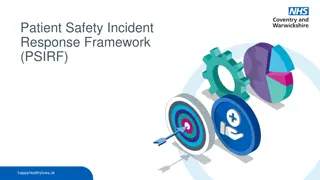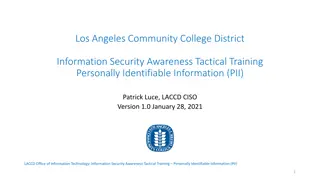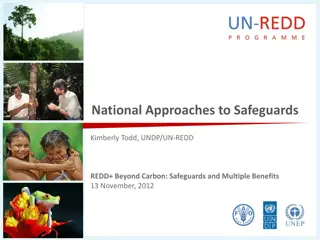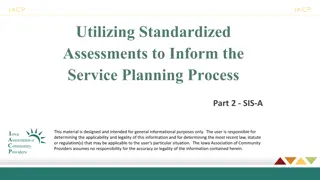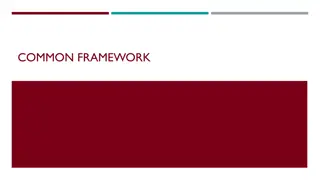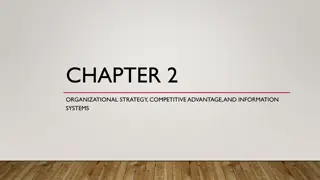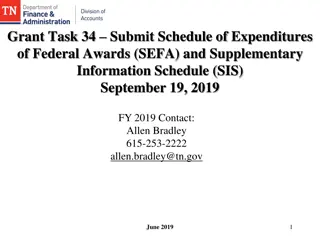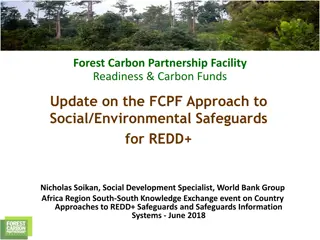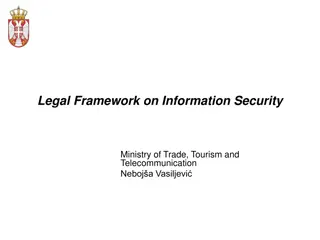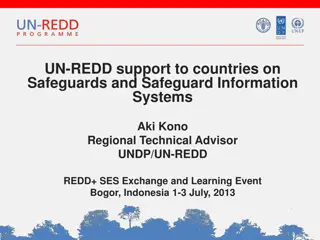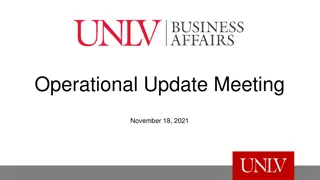Safeguard Information Systems (SIS) Framework Overview
Defining the Safeguard Information Systems (SIS) framework, this discussion covers key components, guiding principles, objectives, and stakeholder participation. Learn about the process for collecting, evaluating, and disseminating safeguard information to ensure effective implementation of REDD+ activities.
Download Presentation

Please find below an Image/Link to download the presentation.
The content on the website is provided AS IS for your information and personal use only. It may not be sold, licensed, or shared on other websites without obtaining consent from the author. Download presentation by click this link. If you encounter any issues during the download, it is possible that the publisher has removed the file from their server.
E N D
Presentation Transcript
Safeguard Information Safeguard Information Systems (SIS): Systems (SIS): A Framework for discussion A Framework for discussion Information and Monitoring Web Conference July 17, 2012
Overview Overview Defining an SIS Guiding Principles/Key Characteristics Key Components of an SIS Process for Developing an SIS Linkage of an SIS to the NFMS Potential future work/deliverables in this area
Defining an SIS: Defining an SIS: What are the Main What are the Main Functions/Objectives? Functions/Objectives? The set of institutions and processes through which safeguard information is collected, evaluated, published and fed back into relevant institutions and local communities. Proposed working definition: Main objectives of an SIS: Collect and provide data and information that demonstrates that UNFCCC-recognized safeguards are both addressed and respected throughout the implementation of REDD+ activities Addressed used to refer to institutions, policies, regulations, strategies, agreements, etc. that are relevant to a safeguard being in place, while respected means the safeguard being implemented effectively. Collecting such information could include identifying key indicators, providing qualitative and wherever possible quantitative data, and thereby enabling the national evaluation of the social and environmental performance of national REDD+ strategies. Other potential uses of an SIS
Guiding Principles/Key Guiding Principles/Key Characteristics of an SIS Characteristics of an SIS Transparency Participatory Feasibility Flexibility Consistency Completeness/Comprehensiveness Cost-effectiveness Practicality Simplicity Avoidance of duplication of other processes Progressive improvement over time ( Stepwise approach )
Key Components of an SIS Key Components of an SIS Effective stakeholder participation Data Policy Types of Information that could be collected/used Including processes for developing nationally appropriate indicators Data and information collection methods, processes, tools Management and Provision of data and information Evaluation of the Information Institutions and Processes for the operation of the SIS
Key Components of an SIS (continued): Key Components of an SIS (continued): Highlighting Management, Provision and Highlighting Management, Provision and Evaluation of the Information Evaluation of the Information Management and Provision of data and information Storage, analysis, and provision of information to national stakeholders and international community Important difference between UNFCCC reporting and provision of information for stakeholders Coverage of information to be provided: comprehensive information from all REDD+-related sites or a sampling? Evaluation of the Information At national-level, validation or reliability check could occur through existing multi-stakeholder body of the national REDD+ management At UNFCCC level, summary information in the National Communications
Process for Developing an Process for Developing an SIS SIS National assessment of existing requirements Gap analysis of existing and development of new processes and procedures Determination of indicators to be used in relation to safeguards Development of data collection and data sharing methodologies
Linkage of an SIS to the Linkage of an SIS to the NFMS NFMS Pros/Cons of linking the systems Discuss country positions on this linkage within UNFCCC Country examples of this linkage being developed What would such a linkage look like? Is there a model(s) that UN-REDD could elaborate?
Potential Deliverables? Potential Deliverables? What are the options for taking this UN-REDD joint-thinking on SIS forward? Framework document on SIS, as companion document to M&MRV Framework? SIS Options paper? Country case studies? Tools?












